

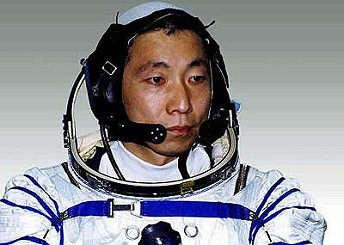 |
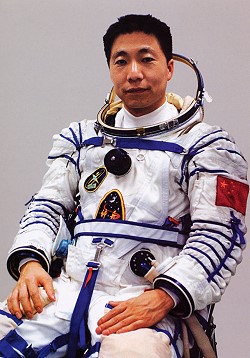 |
 |
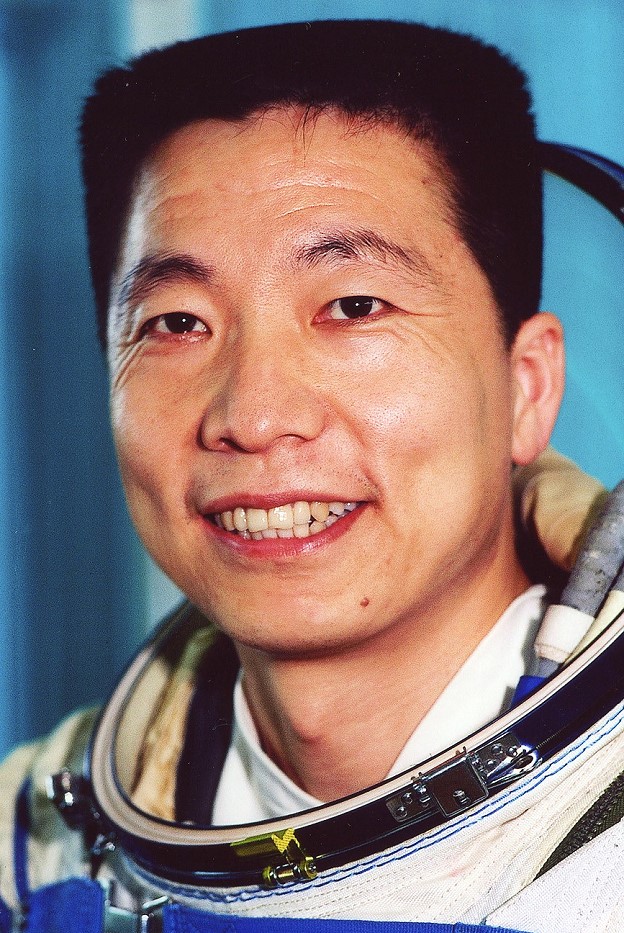 |
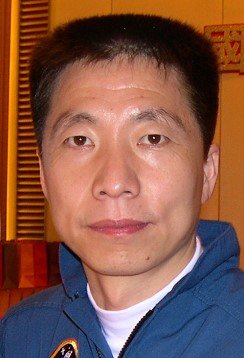 |
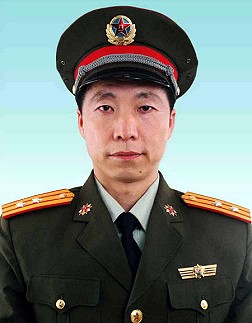 |
Yang Liwei |  |
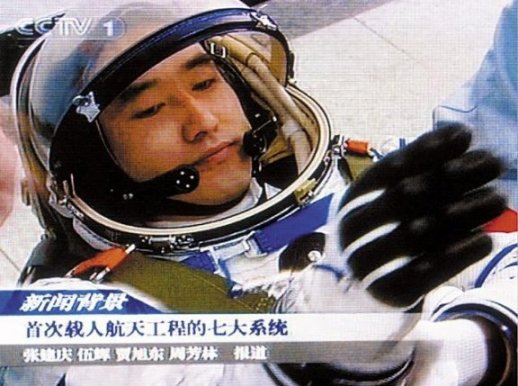 |
 |
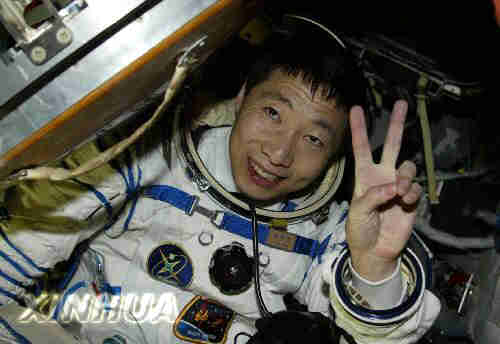 |
 |
|
| China Daily
bio (17 Oct 03) |
On June 21, 1965, Yang Liwei was born in a literary family
in Suizhong County of northeast China's Liaoning Province. He was smart
and acute in his boyhood. He entered a key middle school of the county
with outstanding records after graduation from primary school. He participated
in mathematics competition for middle school students of the county many
times and won many prizes.
In the summer of 1983, the 18-year-old Yang Liwei was recruited by the No. 8 Aviation College of the PLA Air Force. During the four-year study at college, he had been an outstanding cadet in study and training. In 1987, Yang became a fighter pilot of a division of the PLA Air Force after graduation from the Aviation College. With intelligence and diligence, he became a top pilot of the division soon, and later an excellent fighter pilot. Within one decade, he had piloted planes from north China to northwest China, then from northwest China to southwest China. In the summer of 1992, Yang's troop came to an airport of Xinjiang for training. He was piloting a plane over Turpan Aiding Lake for extreme low-altitude flight. Suddenly the plane made a loud sound, and the meter showed the temperature of air cylinder growing high while the engine decreasing its turning speed sharply. Yang realized that he was in a serious trouble of "inflight shutdown". An engine of the plane stopped work. At that critical moment, Yang was extremely calm and determined to pilot the plane back. Grasping the joystick firmly and throttling back slowly, he piloted the fighter plane with only one engine and ascended little by little. 500 meter, 1,000 meter, 1,500 meter, the plane flew over the Tianshan Mountain and flew towards the airport. When he was approaching the airport, the last engine stopped work also. He discharged the undercarriage for emergency decisively, and succeeded in landing the fighter plane, which had lost power completely, on the runway. When he came out of the plane, his aviation uniform was soaked through by sweat. His comrades in arms embraced him in succession. The commander of the regiment declared excitedly on the spot that Yang had won a third-class merit. In early summer of 1996, Yang Liwei, 1.68-meter tall, 65-kg, was informed to have a preliminary physical check up for astronauts in Qingdao Sanatorium. When he passed the preliminary exam, he was notified to undergo clinic exam in the General Hospital of the Air Force in Beijing. Yang was so happy that he arrived at the hospital three days in advance. The nurse joked with him, "You are too active, eh?" Later he came to the Beijing Space Medicine and Medico Engineering Institute for "special exam", i.e., space physical functional exam. The selection of Chinese astronauts will pass numerous exams. The medical clinic exam will examine tens of organs of the human body one by one, and the following space physical functional exam is even more rigorous. After a few months, of the 800 candidates, only a few were left. Yang was the most lucky and excellent one. His various indexes in clinic exam and space physical functional exam have been all excellent, impressing all experts of the selection committee. In January 1998, as a member of China's first team of astronauts, Yang Liwei arrived at the Astronaut Training Base in Beijing with a dream to pursue. The first challenge for Yang Liwei is basic theory training. After being a pilot for more than one decade, he came back to the classroom. He had to study a dozen of courses from the very beginning, such as, "Fundamental to Manned Space Engineering", "Fundamental to Space Medicine", "Anatomic Physiology" and "Star Identification", etc. Yang innately will not lag behind. At the thought of the sacred mission on his shoulder, he forgot all about food and sleep. He recalled that: "During the first two years when I came here, I never went to bed before 12 at night." He used to be poor in English. In order to memorize words and expressions, he called home from astronauts' apartments every night and let his wife Zhang Yumei ask him questions. One time after another, he repeated practice every day. Later in the exam, he got full marks. The second challenge was adaptability training for space environment. It was an extremely arduous training. Take "overweight stamina" training for example. When the spacecraft returns to the earth in ballistic trajectory, the overweight value will reach over "10G". In other words, the astronaut has to endure pressure over ten times as his own weight. Usually, such condition will easily suffocate the astronaut, make him lose his willpower and sight, and even directly threaten his life security. Yang had to enhance his overweight stamina through training. The "centrifuge" training is the most effective way for astronauts to enhance overweight stamina. In a round hall, Yang sat in a cylinder carried by an 8-meter-long iron arm. In a high-revolving speed at 100km/h, he not only had to practice many anti-load actions, such as, straining abdominal muscles and breathing to abdomen, but also had to answer questions or read signals at any moment, and keep acute judgment and response capacity. The centrifuge was revolving when the load increased gradually from 1G to 8G. The facial muscle of Yang became distorted and drooping while his forehead protruded. When he practiced overweight towards head, blood was pressed to his lower limbs, making him dazed for lack of blood in head. In practicing overweight along his chest and back, he felt as if a heavy stone of hundreds of kilograms was laying on his chest and back, making his heartbeat faster and breath difficult. Every training costs him huge physical force. Yang likes to use his mind. He knew what the anti-load methods instructors had taught must be experienced and explored in practice by himself. Therefore, for every training, he consciously practiced with methods experienced by himself, and communicated with instructors in time. Through summarizing experiences, he gradually grasped the force and frequency of anti-load, and found out rules and methods. Then the challenging, rigorous training gradually became easy for him. Other challenges included constitution training, psychological training, professional technology training, pilot program and task simulation training, lifesaving and survival training, etc. With his great enthusiasm and persistent pursuit for spaceflight cause, Yang was restrict with himself and kept improving in every aspect. He received outstanding record in every training. Yang's wife Zhang Yumei used to be a middle school teacher. Later she was recruited to the army and became an archivist. She was refined, gentle and weak. In order to support her husband's career, Zhang took on all housework. Even when she gave birth to their son, she did not interfere with her husband's work. In July 2001, Zhang was in hospital for operation. Zhang said, "The moment I was pushed into the operating room, I read worry, care, caress and regret that I have never seen before from his eyes, and my heart contracted in pain as if stabbed by a knife." After the operation, Zhang was so weak that she lied in bed for 24 hours a day without any movement. However, on the third day after the operation, Yang had to leave his wife for an air force base in northeast China's Jilin Province for astronauts' high-altitude flight training. The day before leaving, he sat on the chair by his wife's bed for a whole night. Then he returned to the astronaut team without any thought of turning back. In preparation for the launch of Shenzhou-5 spacecraft, through anonymous votes by experts group, Yang Liwei was selected as "three-people first flight team" with his excellent training records and comprehensive quality, and he was made as the first choice also. Yang devoted himself wholeheartedly into "intensified training". He spent most of his time in "spacecraft simulator". Spacecraft simulator is a professional technology training place on ground by simulating environment in a spacecraft. It is used for training astronauts in spaceflight program and operation. The capsule is full of meters, red and blue signal lights. Circuits cross one another and devices spread all over. One must practice repeatedly in order to get familiar with and master all these and to conduct various operations and remove trouble. Yang collected all graphs for devices and electrical gates in the capsule that he could find, and pasted them on the wall of his dormitory for memorizing at any moment. He also shot the inner structure and devices of the capsule with a camcorder, uploaded it into the computer, and recorded it onto a CD, so that he could browse it whenever he had time. For each training, Yang always had such bright eyes, made such careful examination and each action of Yang had always been so standard. He won praise from his instructor with his serious spirit and skillful technique. In the last phase professional technology exam, the instructor laid many e traps, all of which were discovered and removed by Yang soon. In five normal flight program exams, he got 99 points twice and 100 points three times. He came top in professional technology comprehensive evaluation. |
|